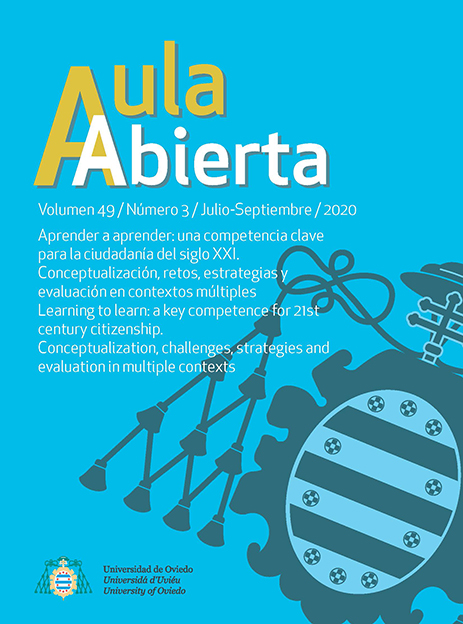Abstract
The complexity of Learning to Learn (L2L) stresses the need to make its presence and characterization more relevant within the national policies and curricula of the countries involved in this international research (Brazil, Ecuador, Italy, Spain, Mexico, and Uruguay); nevertheless, the cultural differences and similarities between countries should be taken into consideration. The motivation that underlies this article reflects the importance of analyzing how national policies and curricula outline learning to learn while considering its impact on teacher training and teaching.
The research question examines how the educational systems that regulate compulsory education in the aforementioned countries frame L2L within their policies and their curricula. The research considers the situational and contextual aspects referring to the thematization and development of this competence in each system.
Due to the complexity of the scenario, we use a qualitative research methodology. The results of the study display the complexity of L2L regarding the educational approach of each country considering that five countries introduce L2L in the curricular guidelines for some school levels and none of them presents resources to help teachers develop this competence.
Key words: learning competence, learning to learn, curricula, qualitative analysis, comparative analysis.
References
Alexander P.A. y Jetton, T. I. (2000). Learning form text: A multidimensional and developmental perspective. In Kamill, L. M., Pearson, P. D. y Barr, R. (Coord.), Handbook of reading research, Mahwah: Erlbaum
Bailey, K. D. (1991). Metodi di ricerca sociale. Bologna: Il Mulino.
Bruner, J. (1990). Culture and Human Development. A new look. Human Development, 33, 344-355.
Creswell, J.W. y Miller, D. L. (2000). Determining Validity in Qualitative Inquiry, Theory Into Practice, 39:3, 124-130
Deakin Crick, R, Stringher, C. y Ren, K. (2014). Learning to learn. International perspectives from theory and practice. London: Routledge.
Delors, J. (1996). Learning: The Treasure Within. Paris: Unesco.
Denzin, N. K., y Lincoln, Y. S. (1994). Handbook of Qualitative Research. Thousand Oaks: Sage.
Erikson, E. H. (1981). I cicli della vita. Roma: Armando.
European Commission (2018). Proposal for a Council Recommendation on Key Competences for Lifelong Learning, COM 24 final 2018/0008.
European Communities (2006). Recommendation of the European Parliament and of the Council of 18 December 2006 on key competences for lifelong learning. Official Journal of the European Union.
Hounsell, D. (1979). Learning to learn: research and development in student learning. Higher Education, 8 (4), 453-469.
Kupiainen, S., Hautamäki, J., y Rantanen, P. (2008). EU pre-pilot on learning to learn: Report on the compiled data. 2008-1190/001-001 TRA-TRINDC, Brussels: European Commission.
OECD (2008). Innovating to learn, learning to innovate. Paris: OECD.
OEI (2010). Metas Educativas Iberoamericanas 2021.
OMS (2006). Constitución de la Organización Mundial de la Salud, Documentos básicos, 45ª edición, p. 1.
Patera, S. (2018). Learning to learn in Latin America: A quali-quantitative comparative analysis of national curricoli and educational systems of compulsory education in Latin America. Working Papers Invalsi, 32, 1-56.
Stringher, C., Di Rienzo, P., Brito Rivera, H.A., Davis, C., y García, E. (2019). Aprender a aprender en América Latina. Una reseña sistemática de la literatura. En Deakin Crick, R., Stringher, C. y Ren, K. (Coord.) Learning to learn. International perspectives from theory and practice. Ciudad de México: Trillas.
Teddlie, C. y Tashakkori, A. (2009). Foundations of mixed methods research: Integrating quantitative and qualitative techniques in the social and behavioral sciences. London: Sage.
UNESCO (2013). Glossary of Curriculum Terminology. Geneve: Switzerland.
UNESCO (2016). ¿Qué es el patrimonio cultural inmaterial? Unesdoc Digital Library.
UNICEF (2018). La agenda de la infancia y la adolescencia 2019-2024. UNICEF México.
UNICEF-INEE (2018). Panorama educativo de la población indígena y afrodescendiente. UNICEF México - INEE.

